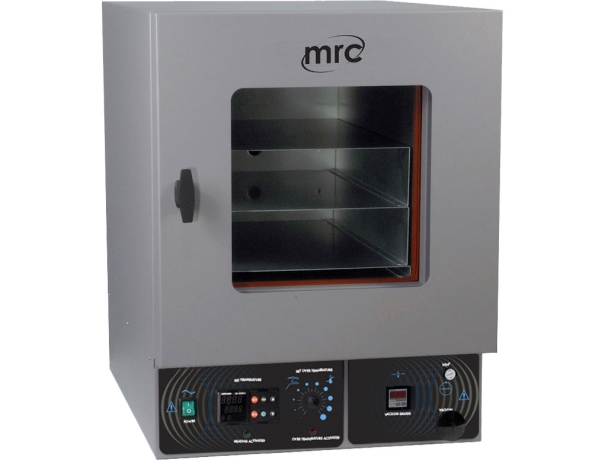Lab ovens are an essential tool in scientific research, quality control, and industrial processes. They’re designed to perform critical functions like drying, heating, sterilizing, and testing materials. Choosing the right type of lab oven can make a significant difference in the quality and efficiency of lab work, especially since each type serves different purposes and processes. In this guide, we’ll walk through the main types of lab ovens and highlight the unique features, applications, and benefits of each.
Types of Lab Ovens: An Overview
Laboratory ovens come in various forms, each engineered to handle specific tasks and conditions. Understanding the key differences between them helps laboratories select the right oven for their needs, optimizing both safety and efficiency. Here’s a breakdown of the primary types of lab ovens.
Standard Drying Ovens
Standard drying ovens, sometimes called "convection ovens," are the go-to choice for general heating and drying purposes. These ovens circulate heated air around the sample to remove moisture or prepare samples for further testing.
- Key Features and Functions: Standard drying ovens maintain a stable temperature and are typically used for drying glassware, samples, or other non-sensitive items.
- Common Applications in the Lab: Ideal for routine drying tasks, material testing, and sample preparation.
Vacuum Ovens
Vacuum ovens are designed to remove moisture from samples without exposing them to high heat, which can be especially useful for heat-sensitive substances.
- How Vacuum Ovens Operate: Vacuum ovens reduce the boiling point of liquids within the sample, allowing evaporation at much lower temperatures than standard ovens.
- Uses and Applications: These ovens are essential in sensitive applications such as pharmaceutical research, electronics, and delicate sample drying.

Forced-Air Convection Ovens
In forced-air convection ovens, a fan actively circulates hot air, creating even heat distribution across the chamber.
- Features of Forced-Air Convection Ovens: They offer faster drying times and uniform heating, making them more efficient than gravity convection ovens.
- Benefits: These ovens are commonly used in microbiology, materials testing, and other fields that require even temperature distribution.

Gravity Convection Ovens
Gravity convection ovens rely on natural airflow, allowing heat to rise and circulate within the chamber.
- Explanation of Gravity Convection Heating: The process relies on the physical property of hot air rising, distributing heat gradually throughout the oven.
- Pros and Cons: Gravity convection ovens are energy-efficient and ideal for applications that don’t require rapid heating, though they may have slightly uneven temperature distribution.
Cleanroom Ovens
Cleanroom ovens are designed for use in sterile or contamination-sensitive environments, where maintaining cleanliness is crucial.
- Design and Purpose: These ovens are constructed with non-porous, easy-to-clean materials, and often include HEPA filters to maintain air quality.
- Typical Applications: Common in industries such as pharmaceuticals, biotechnology, and electronics manufacturing.

High-Temperature Ovens
High-temperature ovens are specialized for processes requiring extreme heat, often reaching temperatures above 500°C.
- Purpose and Range: These ovens are designed for thermal processing, materials testing, and other high-heat applications.
- Applications: Useful in metallurgy, materials science, and testing applications that demand high heat tolerance.
Microwave Ovens for Labs
Microwave lab ovens differ significantly from household microwaves, engineered specifically for lab work.
- Unique Properties: These ovens use microwave energy to heat substances, allowing rapid processing.
- Specialized Applications: Often used in chemical and material synthesis due to the unique interaction between microwaves and substances.
Hybrid Ovens
Hybrid ovens combine features from multiple oven types, creating flexible equipment suitable for diverse laboratory needs.
- Combining Features: Some hybrids may combine convection and microwave heating, offering versatility in sample preparation.
- Specialized Uses and Advantages: These ovens are ideal for labs with diverse requirements, offering multiple heating methods in one unit.
Factors to Consider When Choosing a Lab Oven
Selecting the right oven requires careful consideration of several factors:
- Heating Method: Choose based on the sensitivity and type of material being processed.
- Temperature Range: Ensure the oven can reach the required temperature for specific applications.
- Size and Capacity: Make sure the oven fits your sample size and volume requirements.
Common Applications Across Different Types of Lab Ovens
Lab ovens serve several critical functions across scientific fields. Some common applications include:
- Sample Drying: Used to remove moisture from samples.
- Sterilization: Used to eliminate contaminants.
- Material Testing: Allows testing of materials under controlled heat.
- Evaporation: Useful for processes requiring the removal of solvents.
Maintenance Tips for Optimal Performance
Keeping a lab oven in good working condition ensures it operates efficiently and safely.
- Cleaning Routines: Regular cleaning prevents contamination and buildup.
- Calibration: Periodic calibration ensures accuracy, especially for temperature-sensitive applications.
- Safety Checks: Routine safety inspections can prevent overheating and electrical issues.